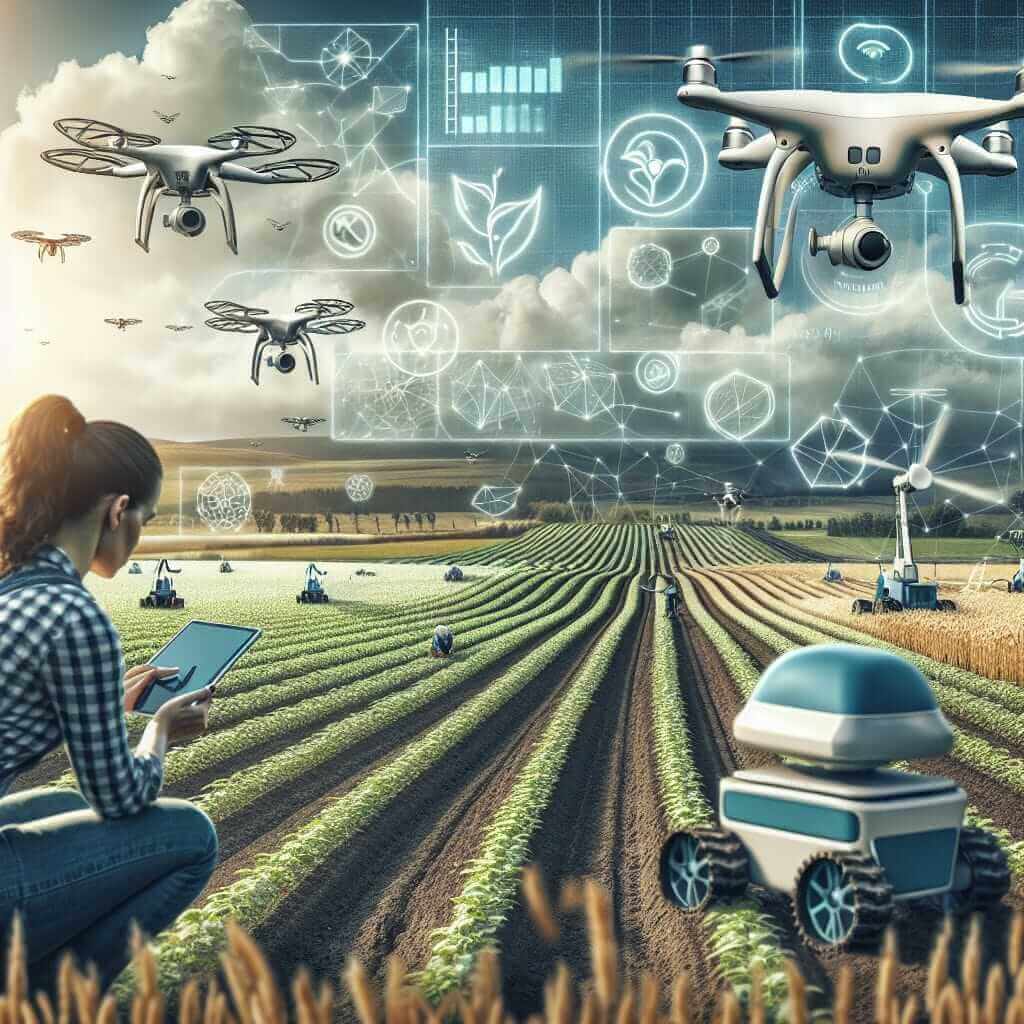The IELTS Reading section assesses a candidate’s ability to understand detailed and complex texts. One popular topic is the application of AI in various sectors, such as enhancing food security. By understanding how Artificial Intelligence is being used to boost food security, you can better anticipate and tackle similar topics in the exam. Given the growing importance and media coverage of food security and AI, this issue is timely and likely to appear in future IELTS exams.
Reading Passage and Questions
Reading Passage
Title: How is AI Being Used to Enhance Food Security?
The world is rapidly changing, and the agricultural sector is no exception. As the global population continues to rise, ensuring food security becomes a critical challenge. Artificial Intelligence (AI) has emerged as a vital tool in addressing this issue. This article explores how AI technologies are being implemented to enhance food security, from predicting crop yields to managing supply chains.
AI-driven predictive analytics helps farmers forecast crop yields with remarkable accuracy. By analyzing historical weather patterns, soil health, and crop data, AI models can estimate the best time to plant and harvest. These insights allow farmers to optimize their resources and reduce waste.
Moreover, machine learning algorithms are facilitating pest and disease detection. Early identification of these threats can prevent widespread damage to crops. For instance, AI-powered drones equipped with advanced imaging technologies can patrol fields, identify signs of infestations, and alert farmers in real-time.
Supply chain management also benefits immensely from AI. With the aid of AI, logistical challenges such as transportation delays and storage inefficiencies can be mitigated. For example, AI systems can predict potential spoilage during transit and suggest rerouting strategies to ensure that food reaches its destination in optimal condition.
These applications of AI are not just futuristic concepts; they are already in practice and showing promising results. As technology progresses, AI’s role in enhancing food security will continue to expand, offering new ways to feed a growing global population efficiently and sustainably.
Questions
Multiple Choice
-
What is the primary focus of AI-driven predictive analytics in agriculture?
A. Managing transportation logistics
B. Forecasting crop yields
C. Detecting pest infestations
D. Controlling storage conditions -
How do AI-powered drones assist farmers?
A. They automatically harvest crops
B. They identify pests and diseases in fields
C. They transport harvested crops
D. They plant seeds
True/False/Not Given
- AI technologies can only be applied to large-scale farms.
- Machine learning algorithms are being used to predict the best time to plant crops.
- There are no practical implementations of AI in agriculture as of now.
Matching Sentence Endings
- AI helps improve supply chain management by…
A. analyzing historical weather patterns.
B. suggesting rerouting strategies for transport.
C. offering new ways to optimize resources.
D. providing advanced imaging technologies.
Answer Key
Multiple Choice
- B — Forecasting crop yields
- B — They identify pests and diseases in fields
True/False/Not Given
- False — AI technologies are applicable to various farm sizes.
- True — AI-driven predictive analytics can estimate the best time to plant crops.
- False — AI applications are already in practice.
Matching Sentence Endings
- B — suggesting rerouting strategies for transport.
Common Mistakes and Lessons
Mistakes
- Misinterpreting Keywords: Keywords like “forecast,” “predict,” or “estimate” indicate a focus on predictive capabilities.
- Assuming Information: Do not assume information not explicitly stated in the passage.
Lessons
- Skimming and Scanning: Practice skimming the passage for general understanding and scanning for specific details to answer questions accurately.
- Keyword Identification: Focus on understanding the use of keywords and their synonyms.
- Understanding Context: Pay attention to how sentences relate to each other to accurately determine the meaning.
Vocabulary
- Predictive analytics (noun) /prɪˈdɪktɪv əˈnælɪtɪks/ – The use of data, statistical algorithms, and machine learning techniques to identify the likelihood of future outcomes based on historical data.
- Logistics (noun) /ləˈdʒɪstɪks/ – The detailed coordination of a complex operation involving many people, facilities, or supplies.
Grammar Focus
Conditional Sentences: Conditional sentences are essential to describe possibilities or hypothetical situations.
- Formula: If + Simple Present, will + Infinitive
- Example: If AI systems predict spoilage during transit, they will suggest rerouting strategies.
Tips for High IELTS Reading Scores
- Practice Regularly: Daily reading practice can significantly improve your speed and comprehension.
- Expand Your Vocabulary: Frequently review and learn new words to improve your language understanding.
- Understand Different Question Types: Familiarize yourself with all types of questions in the IELTS Reading section.

By leveraging the insights and strategies provided here, you can enhance your preparation for the IELTS Reading section. Focus on understanding the passage, answering questions accurately, and continually expanding your vocabulary and grammar knowledge. Good luck!